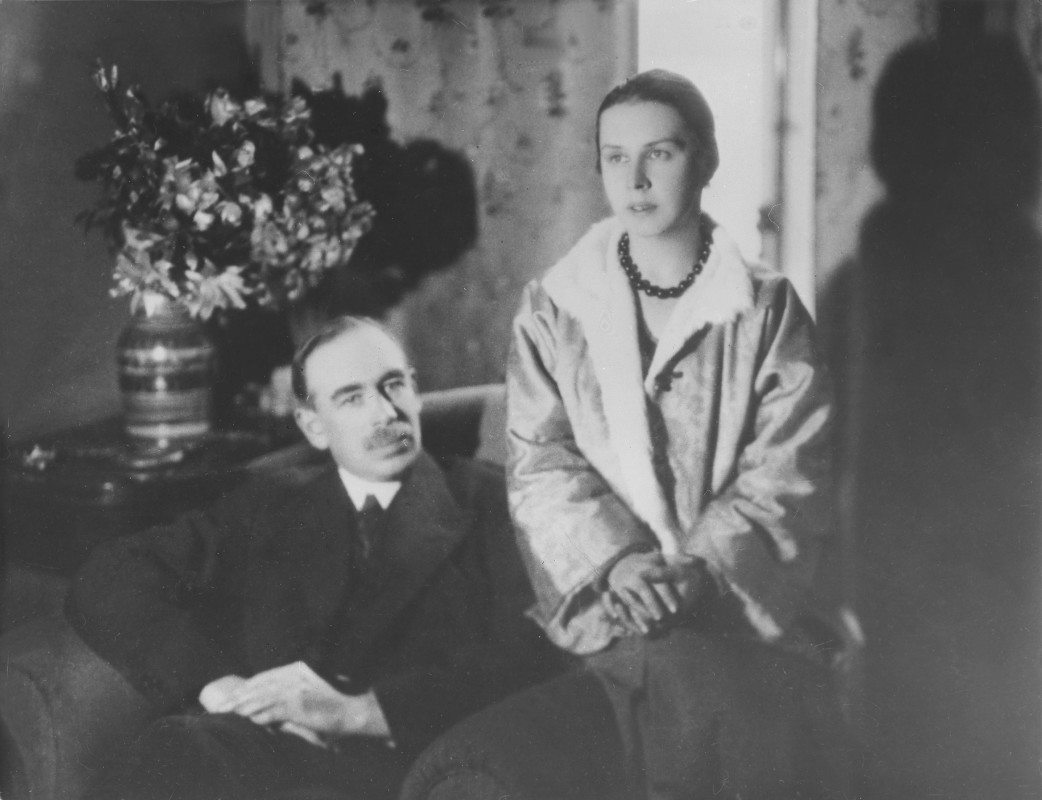
Known as the “Father of Macroeconomics,” John Maynard Keynes (1883–1946) was a 20th-century British economist, author, and educator.
Keynes was born on June 5, 1883, in Cambridge, England. His father, John Neville Keynes, was an economist who taught at the University of Cambridge, and his mother, Florence Ada Keynes, was one Cambridge’s first female graduates.
Originally trained as a mathematician, Keynes challenged contemporary beliefs about economics, particularly its reliance on free markets and the adage “supply creates demand.”
Instead of supply leading demand, Keynes believed the opposite was true: The level of activity in an economy was dictated by aggregate demand, or the sum of demand for goods and services by households, businesses, and the government. Keynes also introduced theories on how fiscal and monetary policies could resolve recessions.
While Keynes described himself as a “liberal socialist,” most scholars consider him a capitalist, since he did not show solidarity with workers and believed that revolution was “out of date,” stating “the Class war will find me on the side of the educated bourgeoisie.” By pointing out the flaws of capitalism, he was, in effect, attempting to make the system better.
💰💸 Don’t miss the move: SIGN UP for TheStreet’s FREE Daily newsletter 💰💸
In 1925, Keynes married Lydia Lopokova, who was a similar iconoclast in her field. Originally trained as a ballerina at the Imperial School of Ballet in St. Petersburg, Russia, Lopokova became drawn to the expressive and unconventional choreography of Mikhail Fokine, and left the country to perform with the Ballets Russes. Their avant-garde style revolutionized ballet.
Related: Who was Benjamin Graham & why is he still so influential?
Keynes and Lopokova lived in London and Sussex and counted E.M. Forster, Virginia Woolf, Pablo Picasso, T.S. Eliot, and H.G. Wells among their friends. They became patrons of dance and theater and amassed a substantial collection of modern art.
Due to his contributions to modern economic theory, Keynes was made a member of the House of Lords in 1942, accepting the title of Baron Keynes of Tilton. He died of a heart attack on April 21, 1946, and his net worth stood at £500,000 — the equivalent of £26 million, or $33 million, in 2024.

ullstein bild Dtl. / Contributor / Getty Images
How did Keynes’ revolutionize economic thought?
Keynes’ best-known work, The General Theory of Employment, Interest and Money, was published in 1936 at the height of the Great Depression. This book marked a paradigm shift in economic thought.
Whereas previously, economies were “laissez-faire” and prone to the whims of free-market capitalism, Keynes advocated for much more accountable governments. He also advocated increased government spending to resolve economic crises, even if that also meant creating or adding to deficits.
In addition, Keynes believed that a government could cure high levels of unemployment by increasing spending because it was the very lack of demand for goods and services that was the root cause of joblessness.
Related: Who is Ben Bernanke? The former Fed chair's career & legacy
World leaders took his advice to heart — U.S. President Franklin Delano Roosevelt was particularly influenced by Keynesian economics, and his “New Deal” included large-scale public works programs that created jobs for millions of Americans.
Keynes personally saw his investments wiped out during the 1929 stock market crash, although they would later rebound. Always a man of principle, Keynes even refused to sell during down markets for fear that he would be personally contributing to capitulation.
What is Keynesian economics?
Tackling the Great Depression, Keynes believed governments needed to be much more proactive in their economic oversight. There were two things in particular they needed to manage:
- Monetary policy, by managing (reducing) interest rates
- Fiscal policy, through investment in infrastructure, enacting tax cuts, or both
Keynes believed that even though periods of contraction would always be a part of the business cycle, government spending could help to lessen their severity or prevent downturns from turning into crises.
Keynes reasoned that government stimulation would, in effect, boost spending from its citizens, which would create more demand for goods and services, increase production, and eventually, reduce unemployment.
Critics of Keynesian economics would argue that at some point, the deficit spending Keynes was promoting would have to be addressed, otherwise it would lead to defaults. Keynes’ fatalistically responded by saying that a government must take action to solve problems in the short-term, because “in the long run, we all are dead.” In other words, he felt it was far more important for a government to address its most pressing, short-term issues — because to a man who had lived to see both world wars, the future was never guaranteed.
More economic and business personalities:
- Bill Gates' net worth: Just how much has he made — and given away?
- Who is Bernie Madoff? An overview of the infamous investor's life & death
- Who is Jerome Powell & what is his job as Fed Chair?
What else is John Maynard Keynes known for?
John Maynard Keynes served as an economic advisor to Britain after World War I, and many believe his economic views correctly predicted the rise of fascism in Germany that preceded World War II.
During the Paris Peace Conference of 1919, which established post-war terms for Germany, Keynes was an outspoken critic of the sanctions that Great Britain, France, the U.S., and Italy chose to impose on the country. He believed such harsh measures would cause Germany’s near-total economic collapse as well as spur even greater political turmoil. His opinions were published in a book called The Economic Consequences of the Peace, which would become a bestseller.
Later, after his dire predictions came to fruition. In 1944, around the end of World War II, Keynes led the U.K. economic delegation to the Bretton Woods conference, which effectively created the rules for a new, global financial system. Keynes is considered a founding father of both the International Monetary Fund and the World Bank.
What are Keynes’ views on employment?
Today, Keynes may be best known for his optimistic views on employment. In his essay “Economic Possibilities For Our Grandchildren,” Keynes predicted that by the time his children grew into adults, they would only need to work 15 hours per week. He reasoned that advancements in technology would lead to greater productivity, which would, in turn, lead to shorter work weeks.
Ultimately, Keynes never had children, and we all know this is one theory that has yet to come to fruition.
View the original article to see embedded media.
How is Keynes’ influence felt today?
The 1970s was an era of stagflation, an especially sticky situation that included supply shocks, ballooning inflation, and economic stagnation. Spending more was not the panacea for the ailing U.S. economy, so Keynesian economics fell largely out of favor.
Thirty years on, Keynesian economics would make a roaring comeback during the Financial Crisis of 2007–2008, when central banks, roiling from the worldwide implosion of mortgage-backed securities stemming from toxic subprime debt, put several Keynesian tenets into action, such as slashing interest rates to increase market liquidity and undertaking more unconventional stimulus measures like quantitative easing.
Some economists have even called Keynes “Ben Bernanke’s Philosopher,” referring to the Federal Reserve Chairman who steered the U.S. economy out of troubled waters relatively quickly and largely averted a second Great Depression.
Related: The 10 best investing books (according to stock market pros)







